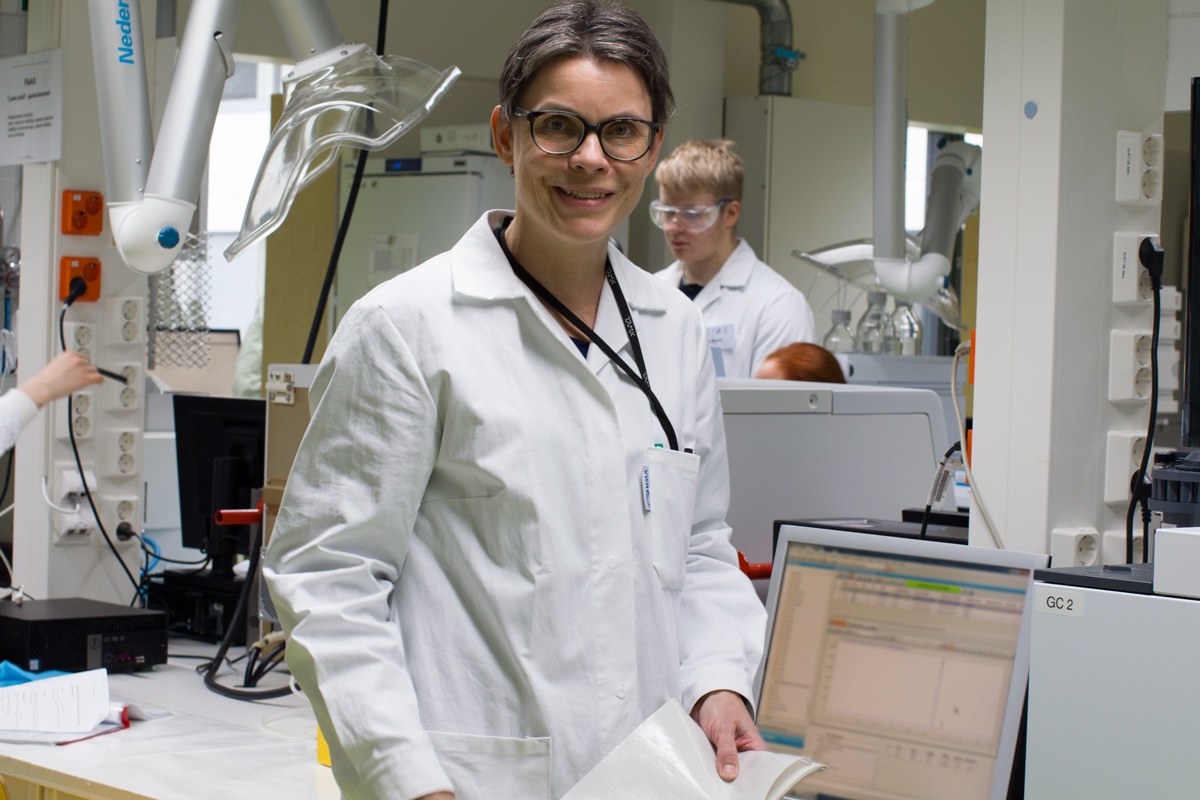There is no need to skimp on plastic in future

“Plastic materials however help to reduce food waste and in several long-lasting applications plastic is an unparalleled material compared with other alternatives,” states Hiipakka, who is the project manager of the EU project at TAMK.
The ERDF project is developing low-carbon material and process solutions for packaging and hygienic paper sectors and a research, development and pilot environment for Tampere Region enterprises together with VTT, Ekokumppanit and nine Tampere Region enterprises. TAMK participates in the project and establishment of a new competence centre. In practice, the objective is to study applicability of biobased, biodegradable and recyclable plastic foils in different product solutions.
“The second objective is to develop a new low-threshold operating environment, a research, development and pilot environment, to improve growth and competitive strength of Tampere Region enterprises.”
VTT develops and processes low-carbon materials and TAMK studies and tests the materials, especially their features, biodegradability and compostability.
“In the project we established a new compostability and biodegradability environment at TAMK. In addition, our paper and packaging laboratory has tested foil materials processed by VTT.”
The project is a real pioneer as there have not earlier been such testing environments in Finland. The project does not do project development for the participating enterprises.
“Some enterprises have already asked if they could also join the project. The interest tells that there is need for such activity.”
Know the terminology
No plastic, whether biobased, biodegradable or traditional, belongs to the nature. It should be recycled. Consumers often have a wrong conception of biodegradable and biobased products. According to Hiipakka, the term biodegradable is often understood as a permission to throw the product into nature.
“If for example a plastic take-away mug has the text biodegradable, it is biodegradable in plant conditions but not in nature.”
The term bioplastic is also ambiguous: it can mean biobased plastic, biodegradable plastic or both of them. For example, polythene produced of sugar cane is biobased but not biodegradable.
“In this case, the raw material is biobased sugar cane, not oil. Even so, the material is polythene, which does not degrade.”
Respectively there are materials which are made of fossil material but are biodegradable. They are biodegradable but not biobased and classified as bioplastics. Biobags are often made of starch and they are thus biobased and biodegradable. In order to make a mess of concepts, there is also the term compostability. It is not the same as standard-based biodegradability.
“Compostability testing examines how plastic foils decompose in a controlled compost environment in such a way that foils become undetectable to the eye. Biodegradation examines how the material transforms into biomass, carbon dioxide and water in laboratory conditions, measures the resulting carbon dioxide and thus determines biodegradability.”

Harsh composting
Biodegradable bags already belong to foil manufacturers’ product selection and consumers have also found them. Waste management is however not ready for them but biodegradable bags often disrupt waste management processes.
At TAMK, the most visible achievement of the PIHI project is a compostability environment in a container. There are composters which are used for decomposition testing in standard conditions. One compostability test takes 12 weeks. Functioning of the composts is followed for example with temperature and oxygen sensors.
At the end of the test, the amount of decomposed material is determined and the compost quality is checked with various tests.
“Compostability testing is harsh work. Raw crushed compost material is collected from waste management. It is mixed with wood chips. The test materials are sunk into the mass and their decomposition is monitored and measured in different ways. The compost is also turned at regular intervals to ensure compost functioning.”
Future dream
The project has crossed its midpoint and according to Hiipakka many positive results have been achieved. At TAMK the project results will offer tools for testing low-carbon foil solutions in teaching and projects.
“In 2021 TAMK can offer an open product development environment where enterprises can test their samples. The situation is ideal: we can support Finnish enterprises in their product development.”
The PIHI project will not make low-carbon foils widely available for customers but helps to take a big step towards low-carbon materials.
“Consumers can see all this after we tell the enterprises if their products are biodegradable or compostable. After our testing, the enterprises’ way to low-carbon materials is considerably shorter and smoother.”
The PIHI project is an EU-funded project subordinated to the Council of Tampere Region. The two-year project started in March 2018. The project participants are TAMK, VTT, Ekokumppanit and nine Tampere Region enterprises. The enterprises are material suppliers, foil producers and users and equipment suppliers. The project is coordinated by VTT and the project manager is Jussi Lahtinen.
Text: Outi Suoranta
Photo: Jaakko Saarilampi





